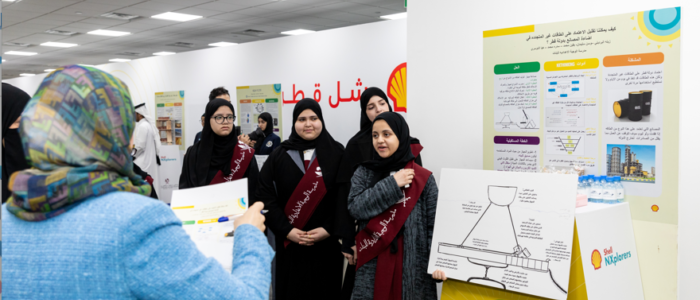Research from all over the world has long since established that stereotypes form early in life. Gender stereotypes are no exception to this rule; they have been found to be present in kindergarten-aged children, and children as young as 5 have been found to hold already deeply ingrained ideas around gender norms across the OECD1. These stereotypes have a profound impact on children’s aspirations and beliefs about what is possible for them as they grow up.
A study in the US2 has shown that even very young children believe that boys are more interested in STEM subjects, including computer science and engineering, than girls. This stereotype has a tangible impact on children’s motivation in these subjects; young girls who have been told that boys are more likely to be interested in a STEM activity subsequently demonstrate less interest in that activity themselves. They are less likely to choose to study these subjects, and less likely to feel a sense of belonging within them. And this is only looking at the stereotype of who is more interested in STEM – when it comes to stereotypes about who is more talented, the impact is compounded even further. A global report3 conducted across 72 countries explored gender-talent stereotypes, whereby boys are assumed to have more ‘raw’ or ‘natural’ talent than girls. The stronger the gender-talent stereotype in a society, the more likely girls are to internalise the belief that they do not have the natural talent required to succeed at something which is not taught, or which is traditionally associated with boys.
Taken together, these issues lead to far fewer girls believing that they should, could, or even want to pursue STEM subjects. Globally, women make up only 29.2% of the STEM workforce, despite comprising nearly 50% of non-STEM jobs4. In the EU, only 1 in 3 STEM graduates are women5, but even in countries where greater numbers of women enrol in STEM courses, this does not always translate to a more equal workforce: at 43%, India has the highest rate of female STEM graduates in the world – and yet women represent only 27% of the country’s STEM workforce6. The existence of such a disparity between men and women in STEM comes back to stereotypes. Research7 shows that women do not pursue careers in STEM because they have not been encouraged to do so, or because the industry is too male-dominated to feel welcoming to them.
So, if stereotypes are causing such an issue, what can we do about it? The answer may lie in developing young people’s critical thinking skills. Critical thinking – defined as ‘gathering, interpreting, evaluating, or using evidence in a thoughtful, intentional, and critical way’8 - has been identified as a key way to overcome stereotypes, with critical thinking interventions being shown to enhance students’ abilities to avoid generalised preconceptions. Knowing as we do that stereotypes are developed in very young children, it is vital that these critical thinking interventions are put in place early. Research9 into developing critical thinking skills in early childhood has identified a number of effective methods, including:
If developing children’s critical thinking skills can help them to avoid forming harmful stereotypes early, and this in turn can support more girls and young women in pursuing careers in STEM, it seems clear that this deserves the attention of educators around the world.
1. OECD Education and Skills Today (2021) The Future at Five: Gendered Aspirations of Five-Year-Olds, OECD Education and Skills Today. Available at: https://oecdedutoday.com/gende... (Accessed: 12 June 2024).
2. Master, A., Meltzoff, A.N. and Cheryan, S. (2021) ‘Gender stereotypes about interests start early and cause gender disparities in computer science and engineering’, Proceedings of the National Academy of Sciences, 118(48). doi:10.1073/pnas.2100030118.
3. Napp, C. and Breda, T. (2022) ‘The stereotype that girls lack talent: A worldwide investigation’, Science Advances, 8(10). doi:10.1126/sciadv.abm3689.
4. Global Stem Workforce (2024) Society of Women Engineers. Available at: https://swe.org/research/2023/... (Accessed: 20 June 2024).
5. Magee, R. (2024) More women graduate in STEM but inequalities persist in EU, Research Professional News. Available at: https://www.researchprofession...’s Day. (Accessed: 20 June 2024).
6. Sengupta, D. (2024) More women take to stem at college. but can india inc stem their exit from jobs?, mint. Available at: https://www.livemint.com/news/... (Accessed: 20 June 2024).
7. Over one million women now in STEM occupations but still account for 29% of STEM workforce (2024) IET. Available at: https://www.theiet.org/media/p... (Accessed: 20 June 2024).
8. Critical thinking: Skill Development Framework (2022) Pearson.com. Available at: https://www.pearson.com/conten... (Accessed: 08 July 2024).
9. O’Reilly, C., Devitt, A. and Hayes, N. (2022) ‘Critical thinking in the preschool classroom - A systematic literature review’, Thinking Skills and Creativity, 46, p. 101110. doi:10.1016/j.tsc.2022.101110.

